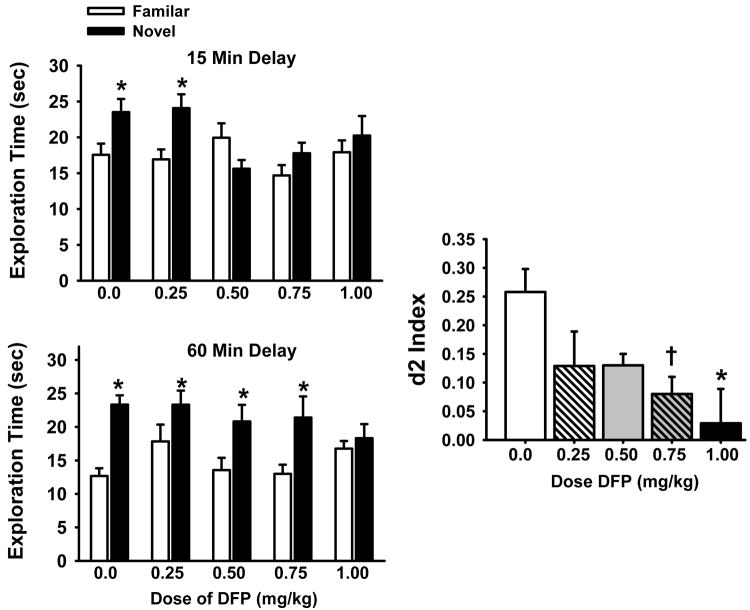Fig 5.
Effects of prior chronic exposure to DFP (i.e., testing on days 2-5 of a DFP-free washout) on the performance of a spontaneous novel object recognition task. The illustrations at the left indicate the preference for the novel object compared with the familiar object (*= p<0.05) at each of the 3 delays. Discrimination (d2) indices (i.e., averaged across delay) are presented at the right. d2 was calculated on each A/B trial and was defined as the difference in time spent exploring the novel and familiar objects divided by the total exploration time for both objects: d2 index = (novel-familiar)/(novel + familiar). Data are expressed as the mean ± S.E.M. N=11-26. * = significantly different from vehicle controls (p<0.05); † = p<0.07.

